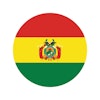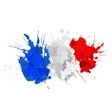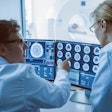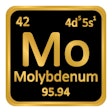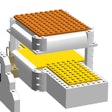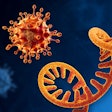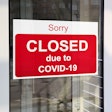
Clinicians and radiologists are unable to see the radiology images and reports for the same patient in a prompt and timely manner if they reside in different PACS archives across the clinical network. Clinicians, oncologists, and radiologists managing patients need instantaneous access to the patients' full consolidated imaging and report histories from across the clinical network to provide high-quality patient management.
 Dr. Neelam Dugar is a consultant radiologist at Doncaster Royal Infirmary, U.K., and former chair of the Royal College of Radiologists' Imaging Informatics Group.
Dr. Neelam Dugar is a consultant radiologist at Doncaster Royal Infirmary, U.K., and former chair of the Royal College of Radiologists' Imaging Informatics Group.In simple terms, when we review a patient's images on PACS we should be able to see all the studies done for the patient across the clinical network. This would allow us to produce high-quality reports and provide high-quality, cost-effective clinical management. The consolidated image and report history is required by both teaching hospitals and district general hospitals alike.
There are two key issues that prevent effective sharing of images and reports within our clinical networks today:
- National IDs, like National Health Service (NHS) number for England, Community Health Index (CHI) for Scotland, and social security number in the U.S. are not stored in a consistent way within different PACS archives.
- Radiology reports are currently stored in proprietary (nonstandard) formats within each PACS, and thus cannot be shared between hospitals, especially when there is a multivendor environment for PACS in the clinical network.
Costs to the NHS
The absence of effective patient-centric, timely availability of radiology images and reports within a clinical network results in huge costs to the NHS. It can result in:
- Unnecessary duplicate imaging performed in each of the hospitals within the network, as doctors may not be aware of imaging already carried out in a neighboring hospital in the network.
- Delays in patient management as images and reports are sent via a time-consuming manual procedures involving an image exchange portal, CDs, etc.
- Duplication of storage within the network. Often images transferred between hospitals are archived in two or three hospital PACS networks.
- Unavailability of primary reports by radiologists results in duplication of time and effort by other radiologists rereporting these imaging studies in different hospitals.
- Time wasted by radiologists and clinicians logging into multiple PACS searching for possible previous imaging studies.
The solution: Federated DICOM query and discovery
There is a fairly simple solution to this problem: using existing standards for a consolidated patient image and report history across the clinical network. It requires all PACS vendors within the network to conform to two simple standards:
- All PACS consistently to store the NHS number in the DICOM tag -- OtherPatient Ids Sequence (0010,1002) in England and Wales (CHI number in Scotland)
- All PACS must communicate radiology reports in a standard way. They must communicate radiology reports as DICOM SR Object or DICOM embedded PDF, as part of the DICOM C_MOVE request for the study.
- Implementation of federated query and discovery within clinical networks would enable huge cost savings for the NHS.
Specification of PACS in a multivendor clinical network
If clinical networks wish to participate in network-based sharing, then they need to specify their requirements very clearly in their contract documentation. There must be specification for federated DICOM query and discovery of radiology images and reports within in the clinical network.
- All PACS in the clinical network must be connected by the DICOM Query-Retrieve standard
- All PACS in the clinical network must store the agreed common regional ID e.g., NHS number in England, CHI number in Scotland, SSN in the U.S., etc., in the DICOM tag called OtherPatient IDs Sequence (0010,1002).
- Other Patient IDs Sequence (0010,1002) DICOM tag has two components that must be populated and updated by HL7 ADT messages from PAS/MPI in the DICOM Database
- HL7 ADT PID 3.1 for regional ID must be mapped to DICOM tag (0010,1010) of Other Patient IDs Sequence (for England/Wales this should contain the NHS number)
- HL7 ADT PID 3.4 "assigning authority" must be mapped to (0010,0021) "Issuer of Patient ID," which is part of the sequence too.
- In England/Wales this would be "NHS."
- PACS would normally receive the radiology report as an HL7 ORU message from RIS. All PACS must provide the report as a DICOM SR object or DICOM-embedded PDF as part of the C-MOVE request for the study.
- All PACS in the network must use C_FIND SCU query based on Other Patient IDs (0010,1002) e.g., NHS number to get an aggregate of patient study information held in the federated PACS in the clinical network (cancer/trauma, etc.)
- All PACS within the network acting as SCP providers must respond with the following DICOM tag information, so that clinicians have adequate clinical metadata information:
- Study Date and time -- 0008,0020-StudyDate and 0008 0030-StudyTime
- Modality -- 0008,0060
- Exam Code & Description -- 0008,0100-Code Value and 0008,1030-StudyDescription (NICIP Code and Description for NHS)
- Scheduled Procedure Status -- 0040,0020
- ReferringPhysicianIdentificationSequence (GMC no) -- 0080,0096
- ReferringPhysicianName (name) -- 0008,0090
- RequestingService (NHS Main Specialty) -- 0032,1033
- InstitutionCodeSequence -- 0008,0082
- OrderEntererLocation -- 0040,2009
- ReasonForCancellation -- 0074,1238
- StationName -- 0008,1010 and 0040,0010-ScheduledStationName
- Number of images in the study
- NameOfPhysiciansReadingStudy (0008,1060) and PhysiciansReadingStudyIdentificationSequence (0008,1062)
- Priority -- 0040,1003-RequestedProcedurePriority
- PACS Display within the Network must provide an aggregated view of the patient history across the clinical network, both at the time of clinical review, and during radiologist reporting -- if required.
- Clinical user clicks to display the image held in one of the regional PACS -- ad-hoc regional query should prompt a DICOM C_MOVE or a WADO display of the images and associated report.
- The radiology report must be communicated via a DICOM SR Object or DICOM embedded PDF as part of the DICOM C_MOVE request for the study. The PACS display software must be able to display both images and also the DICOM SR object or DICOM embedded PDF for the radiology reports.
This specification is simply for instant ad-hoc review of radiology images and reports across a clinical network by clinicians and radiologists on their PACS. NHS trusts looking at replacing PACS should include this requirement in their specification. Clinical networks could ask their existing PACS vendors to support this requirement in their replacement projects.
It's not necessary to have the same PACS vendor across a clinical network. I have offered a global standards-based solution for sharing images and reports, one that should work in a multivendor PACS network.
I will discuss reporting of exams across clinical networks using HL7 ORM and ORU messaging standards in my next column.
Dr. Neelam Dugar is consultant radiologist at Doncaster Royal Infirmary, U.K., and former chair of the Royal College of Radiologists' Imaging Informatics Group.
The comments and observations expressed herein do not necessarily reflect the opinions of AuntMinnieEurope.com, nor should they be construed as an endorsement or admonishment of any particular vendor, analyst, industry consultant, or consulting group.


